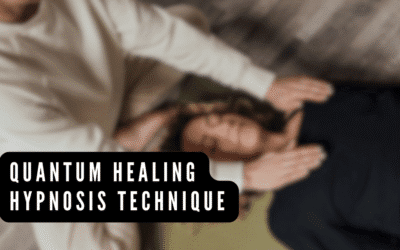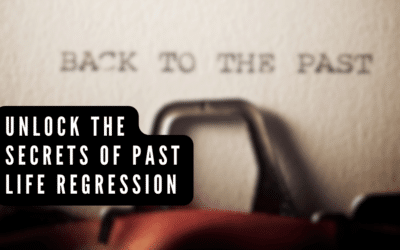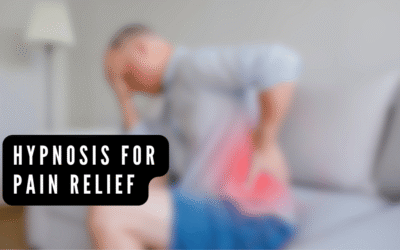Have you ever wished you could take control of your thoughts, break bad habits, or find calm in the middle of chaos?
Self-hypnosis might be the answer you’ve been looking for.
Imagine a simple tool you can use anytime to manage stress, improve sleep, and even achieve big life changes—like losing weight or building confidence.
Self-hypnosis isn’t magic; it’s a practical, science-backed way to connect with your subconscious mind and create positive changes in your life.
In this guide, we’ll show you exactly how it works, the benefits it offers, and how you can start practicing it today. If you’re ready to unlock your full potential, keep reading!
Understanding Self-Hypnosis
The history of hypnosis dates beyond the 18th century. However, early practitioners like Franz Mesmer brought hypnosis into public consciousness around the 1800s.
Self-hypnosis is a powerful technique that allows you to guide yourself into a state of deep relaxation and focused awareness.
In this state, your conscious mind becomes less active, allowing you to connect more easily with your subconscious mind.
This is where your habits, beliefs, and automatic responses are stored, making self-hypnosis a valuable tool for personal growth and change.
What makes self-hypnosis unique is its combination of relaxation and mental focus.
Techniques like progressive muscle relaxation and breathing exercises help calm your body, while therapeutic suggestions and visualizations help direct your thoughts toward positive outcomes.
Practicing self-hypnosis doesn’t require special equipment or years of training. With consistency and an open mind, you can learn to guide yourself into a state of deep calm and use that state to bring about meaningful changes in your life.
Benefits of Self-Hypnosis
Self-hypnosis techniques offer a wide range of benefits, both mental and physical.
- Stress and Anxiety Reduction: By calming the nervous system, self-hypnosis reduces cortisol levels, promoting a sense of inner peace. Regular practice helps you cultivate a more balanced frame of mind
- Pain Management: Using hypnotic induction, you can tap into the mind-body connection to alleviate chronic pain, migraines, and discomfort. Studies show the effectiveness of hypnosis for pain relief.
- Improved Sleep Quality: Self-hypnosis can act as a natural sleep aid, training your mind to relax and drift into deep sleep. Techniques like progressive muscle relaxation and breathing meditation can enhance the quality of your hours of sleep.
- Behaviour Modification: From smoking cessation to rapid weight loss, self-hypnosis helps reprogram subconscious patterns, making it easier to achieve goals like healthier eating habits or breaking bad habits.
Self-Hypnosis vs. Meditation
Self-hypnosis and meditation are practices that promote relaxation, focus, and personal growth. However, they differ in their purpose, techniques, and outcomes.
Goal-Oriented vs. Awareness
The primary difference between self-hypnosis and meditation lies in their goals.
Self-hypnosis is goal-oriented. It focuses on achieving specific outcomes, such as breaking a habit, reducing pain, or boosting self-confidence.
During a self-hypnosis session, you use positive suggestions to guide your subconscious mind toward a goal in mind.
Meditation emphasizes awareness and presence. The goal is often to calm the mind, become fully present in the moment, and develop a sense of inner peace.
While meditation can lead to personal insights or stress reduction, it doesn’t actively aim to reprogram thought patterns or behaviors.
Use of Suggestion
Self-hypnosis involves the deliberate use of hypnotic suggestions to influence the unconscious mind.
These suggestions are crafted to align with your specific goals and are repeated during the hypnotic state to reinforce positive changes. For instance, you might use affirmations like, “I am calm and confident,” to rewire your mindset.
Meditation typically avoids direct suggestions. Instead, it focuses on observing your thoughts without judgment and cultivating a sense of detachment.
Techniques like mindfulness and breathing exercises are used to quiet the mind, but they don’t attempt to alter subconscious patterns.
Techniques for Practicing Self-Hypnosis
Mastering self-hypnosis involves simple procedures that anyone can learn. They include:
- Creating a Conducive Environment
Choose a quiet space where you feel safe and comfortable. Ensure the room is free from distractions like phones or loud noises.
Adding soft lighting or soothing sounds, like a Sleep Hypnosis Sound, can enhance relaxation.
Set a consistent time to practice, making it part of your daily routine for a better success rate.
- Inducing Relaxation
Start with progressive muscle relaxation, tensing and releasing your muscles from your feet to your head. Pair this with deep breathing, like inhaling for four counts, holding for four, and exhaling for four. These physical relaxation techniques help create the ideal relaxation for deep hypnosis.
- Visualization Techniques
Close your eyes and imagine a peaceful scene, like a sunny beach or a quiet forest. Use visual imagery techniques to focus on details such as the sound of waves or the warmth of sunlight. Visualization can deepen relaxation and align your self-directed responses with your goals.
- Crafting Effective Suggestions
The suggestions you use should be positive affirmations phrased in the present tense, such as “I am confident and capable.” Avoid negative phrases like “I will stop feeling anxious.”
These powerful affirmations act as therapeutic suggestions that reprogram your subconscious for success.
5 Best Apps for Self-Hypnosis
Self-hypnosis apps can be valuable tools for managing various issues, including anxiety, stress, and specific phobias like trypanophobia (fear of needles).
These apps offer guided sessions designed to help users enter a state of deep relaxation, making the mind more receptive to positive suggestions.
Here are some notable self-hypnosis apps:
1. HypnoBox
Offers over 600 audio suggestions and customizable sessions to address various concerns, including relaxation and stress reduction.
Users can personalize their experience by choosing different voices and background music. It can be used offline, empowering users to take their sessions wherever they go.
2. Relax and Sleep Well Hypnosis
Developed by a qualified hypnotherapist, this app provides sessions aimed at improving relaxation and sleep quality.
It includes 6 full-length free recordings and an additional 140 options for purchase, focusing on meditation and self-hypnosis techniques.
3. Harmony Hypnosis
Combines self-hypnosis and meditation to help decrease stress and improve relaxation, inner strength, and confidence.
The app offers a range of sessions designed to address various issues and is available on multiple platforms.
4. Reveri
Founded by Dr. David Spiegel of Stanford University, Reveri guides users into a state of heightened focus and relaxation, helping them solve problems, and gain emotional control. It offers sessions for managing stress, and anxiety and improving sleep quality.
5. Lose Weight Hypnosis
The app is designed to help users achieve their weight loss goals by focusing on controlling cravings and making mindful eating choices, instead of losing weight.
By listening to daily 20-minute sessions, users can train their subconscious mind to embrace healthier eating habits and regular exercise routines.
The app features soothing audio recordings by a certified hypnotherapist, accompanied by peaceful background music and nature sounds to enhance relaxation.
When selecting a self-hypnosis app, consider factors such as:
- The specific issues you wish to address
- The app’s features and customization options
- User reviews
- Whether the app was developed by qualified professionals.
Keep in mind, that while these apps can be helpful, they don’t replace professional medical advice or treatment. Always consult a healthcare provider before starting self-hypnosis, especially for complex conditions.
Common Misconceptions About Self-Hypnosis
Hypnosis is often misunderstood as a result of how it’s portrayed in movies. However, those depictions are far from the truth. Here are some misconceptions about self-hypnosis debunked.
Loss of Control
Many believe hypnosis means not being in control, but this is far from true. During hypnosis, you remain fully aware and in charge during the process. Self-hypnosis is a collaborative practice that works with your mind, not against it.
Instant Results
Self-hypnosis isn’t a quick fix. While it can bring meaningful changes, these results require regular practice and patience to take root.
Only for Certain People
Some think self-hypnosis only works for highly hypnotized persons. In reality, anyone can benefit from it with the right guidance and techniques, as it’s more about willingness than innate traits.
Unnatural or Unsafe
Self-hypnosis is often misunderstood as something unnatural or risky. However, it’s a safe and natural state of deep relaxation that taps into your subconscious mind to promote positive change.
Hypnotherapy vs. Self Hypnosis
Both hypnotherapy and self-hypnosis involve accessing the subconscious mind to influence thoughts, behaviors, and emotions, but they differ in their approach and application.
| Hypnotherapy | Self-Hypnosis | |
|---|---|---|
| Guidance | Conducted by a trained professional who tailors sessions to individual needs. | Self-directed practice controlled entirely by you |
| Techniques | Uses advanced and specialized techniques to address deeper psychological, or mental health issues. | Focuses on basic hypnotic methods suitable for everyday challenges. |
| Applications | Ideal for addressing complex issues like phobias, trauma, or addiction. | Best for managing stress, improving focus, or enhancing sleep quality. |
| Customization | Sessions are highly personalized to the individual’s unique concerns. | You can customize it yourself, but it doesn’t include expert guidance for specific issues. |
| Accessibility | Requires scheduling with a professional, often at a higher cost. | Easily accessible and can be practiced anytime and anywhere. |
| Effectiveness | Provides in-depth, long-term solutions for deep-seated issues. | Effective for personal development and stress management but limited for complex challenges. |
What Life Areas Can Self-Hypnosis Help You With
Self-hypnosis can be applied in various life areas such as:
Weight Loss and Healthy Habits
Self-hypnosis for weight loss helps improve eating habits by targeting triggers like emotional eating or cravings. It boosts motivation for exercise, making it easier for you to adopt a healthy lifestyle without relying on restrictive diets.
Stress Management and Relaxation
Self-hypnosis can reduce stress and quieten the mind using guided relaxation and imagery. It promotes inner peace and helps you manage daily challenges more calmly.
Overcoming Insomnia
If you have trouble sleeping, self-hypnosis trains your mind to relax and ease anxiety, creating better conditions for restful sleep. It helps establish healthy sleep patterns over time.
Enhancing Confidence and Self-Esteem
Positive affirmations and visualization in self-hypnosis build confidence and self-worth. It helps overcome doubts and boosts success.
7 Tips for Successful Self-Hypnosis Practice
Self-hypnosis can get you your desired outcomes with the right approach. Here are seven tips to help you get started:
1. Start Small: Begin with short sessions, around 5-10 minutes, and gradually increase as you get more comfortable.
2. Stay Consistent: Practice daily or on a regular schedule to reinforce the habit and improve effectiveness.
3. Set Clear Goals: Define specific outcomes, like reducing stress or improving sleep, to focus your sessions.
4. Create a Calm Environment: Choose a quiet, comfortable space free from distractions to enhance relaxation.
5. Be Patient: Results may take time; trust the process and focus on gradual progress instead of instant changes.
6. Track Progress: Keep a journal to monitor your experiences, note improvements, and refine your suggestions.
7. Use Guided Resources: Consider using hypnosis apps or recordings to stay focused and improve your technique.
Ready to Take Your Hypnosis Journey to the Next Level?
While self-hypnosis is a safe option for personal growth, working with a certified hypnotherapist can fast-track your results.
What do I mean?
A trained professional can customize the techniques to fit your needs and guide you toward your goals more quickly. They can also uncover deep-rooted fears or trauma that may be impacting your quality of life, and empower you to address them.
At Northern Utah Hypnosis Center, I teach you how to use hypnosis to unlock your full potential. Contact us today to schedule an initial consultation.
FAQ
Can anyone practice self-hypnosis?
Yes, self-hypnosis is accessible to anyone willing to learn and practice. It doesn’t require innate traits, just an open mind and consistency.
How long does it take to see results from self-hypnosis?
Results depend on your goals and commitment. While some may notice changes within a few sessions, meaningful progress often requires regular practice over weeks.
What is the difference between self-hypnosis and guided hypnosis?
Self-hypnosis is self-directed, where you guide yourself into a hypnotic state. Guided hypnosis involves working with a professional or using tools like apps or recordings.
Is self-hypnosis safe for managing stress or anxiety?
Yes, self-hypnosis is a safe and effective technique for reducing stress and anxiety. It promotes relaxation and reprograms negative thought patterns.
Can self-hypnosis help with physical issues like pain or insomnia?
Absolutely. Self-hypnosis has been shown to alleviate chronic pain and improve sleep quality by calming the mind and addressing underlying stressors.


